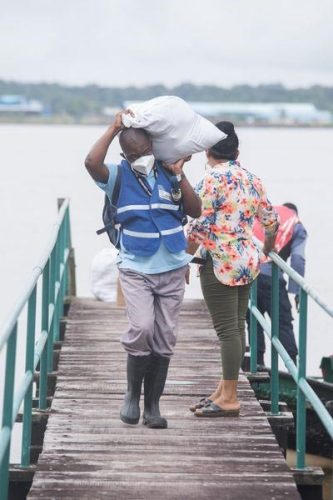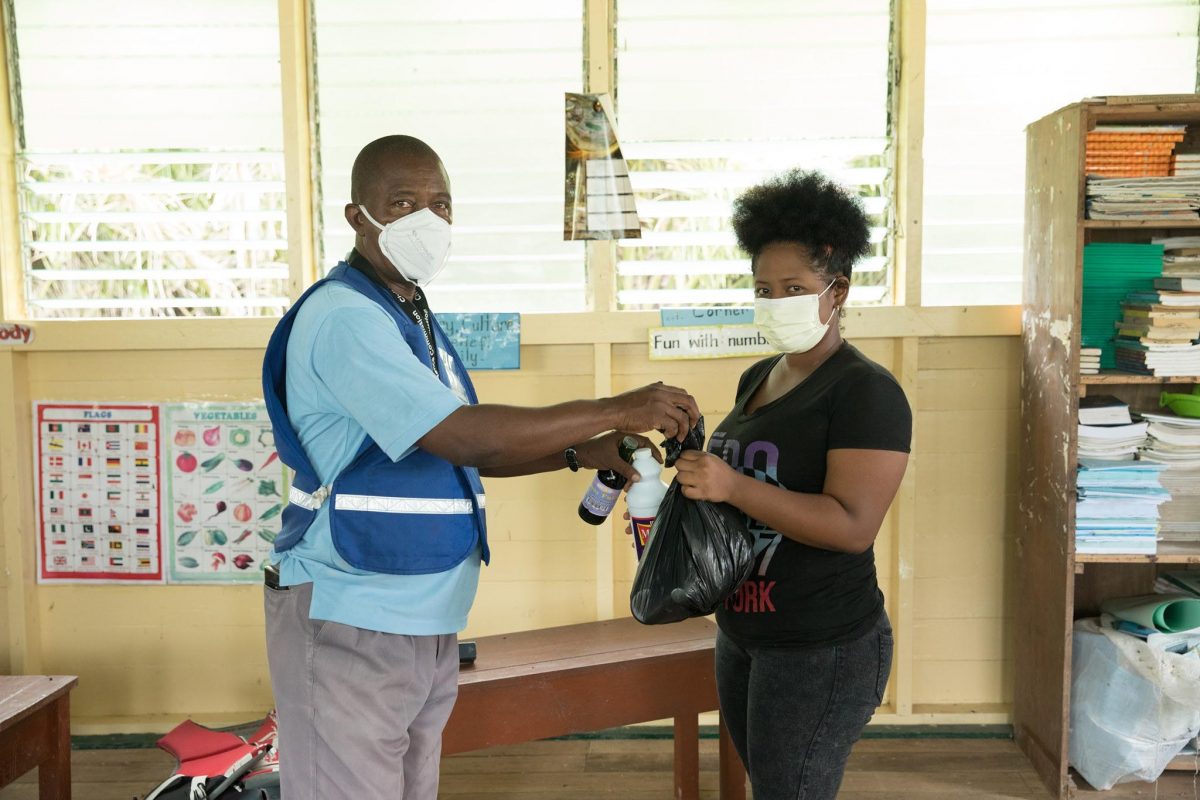During the first week of the rainy season, over 1600 households in five regions were critically affected by flooding, according to the Civil Defence Commission (CDC).
According to an update posted on the CDC’s Facebook page, as a result of the rainfall, thunderstorms and increasingly hide tides affecting the sea and river defence, it visited regions 2, 3, 4, 5, 6 and 10 and conducted assessments in critically affected areas, where a total to 1649 cleaning hampers were distributed to residents and regional authorities.
In Region Two, the CDC found 360 critically affected households, including in Charity, Annandale, Riverstown, Reliance, the Good Hope/Pomona RDC, the Aberdeen/Zorg-en-Vlygt NDC, the Annandale/Riverstown NDC, the Charity/Urasara NDC, and the Evergreen/Paradise NDC.

In Region Three, there were 241 critically affected households, including Cornelia Ida, Best Village, Crane, Sisters Village, Stewartville and Troolie Island.
In Region Four, the areas severely affected by flooding were Mon Repos North, Good Hope, Annandale North, Goedverwagting, Industry/Plaisance, BV/Triumph, Buxton/Foulis, Mon Repos South, Bagotstown, Mocha, Supply, Grove, Albouystown, Charlestown and Georgetown, all of which accounted for 705 households.
In Region Five, 213 households in areas such as D’ Edward Village, Bush Lot, Cotton Tree, and Rosignol were affected by flooding.
In Region Ten, the CDC said, 100 persons residing in areas such as Retrieve, Blueberry Hill, Industrial Area, Amelia’s Ward, First Alley, Second Alley, and Third Alley were affected.
The post said the CDC immediately began assessments and on the direction of Prime Minister Mark Phillips, who has ministerial responsibility for disaster management, it coordinated the activation of the National Emergency Operation Centre (NEOC).
The NEOC comprises representatives of the CDC, the Office of the Prime Minister, the Mayor and City Councillors of Georgetown, the Ministry of Local Government, the Hydrometeorological Services, the Ministry of Education, the Ministry of Public Works, the Ministry of Health, the Guyana Police Force, the Guyana Defence Force, the National Drainage and Irrigation Authority, the Guyana Red Cross Society, the Rotary Club of Georgetown and St. John’s Ambulance Brigade.
The statement said there is on the ground coordination by the Regional Democratic Councils (RDCs) and Neighbourhood Democratic Councils (NDCs), deployment of assessment teams with the support of Guyana Defence Force Coast Guard (CG) personnel and maritime assets, issuing of flood and prevention alerts to RDCs, municipalities and NDCs, public information updates on social media, and distribution of sandbags.
It said the CDC will continue to participate in the NEOC and distribute sandbags on demand, while noting as well that it continues to monitor weather across all ten administrative regions and provide updates and advisories.


